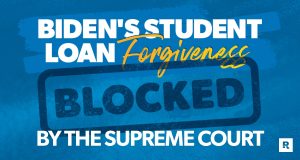Key takeaways
- The main types of mortgages are conventional loans, government-backed loans, jumbo loans, fixed-rate loans and adjustable-rate loans.
- There are other types of mortgages for various purposes, such as building or renovating a home or investing in property.
- The right mortgage for you depends on the strength of your credit score and finances along with your goals.
Most of us need a mortgage to buy a home, but this type of loan isn’t one-size-fits-all. To help you find the right home loan for your needs, here’s our guide to the five main types of mortgages.
Types of home loans
There are five main kinds of mortgages, each with their own benefits and features.
- Conventional loan: Best for borrowers with good credit scores
- Jumbo loan: Best for borrowers with good credit looking to buy a more expensive home
- Government-backed loan: Best for borrowers with lower credit scores and minimal cash for a down payment
- Fixed-rate mortgage: Best for borrowers who’d prefer a predictable, set monthly payment for the duration of the loan
- Adjustable-rate mortgage: Best for borrowers who aren’t planning to stay in the home for an extended period, prefer lower payments in the short term or are comfortable with possibly having to pay more in the future
1. Conventional loan
Conventional loans, the most popular type of mortgage, come in two flavors: conforming and non-conforming.
- Conforming loans: A conforming loan “conforms” to a set of Federal Housing Finance Agency (FHFA) standards, including guidelines around credit, debt and loan size. When a conventional loan meets these standards, it’s eligible to be purchased by Fannie Mae and Freddie Mac, the two government-sponsored enterprises (GSEs) that back much of the mortgage market.
- Non-conforming loans: These loans do not meet one or more of the FHFA’s standards. One of the most common types of non-conforming loan is a jumbo loan, a mortgage in an amount that exceeds the conforming loan limit. Non-conforming loans can’t be purchased by the GSEs, so they’re considered a riskier prospect for lenders.
Pros of conventional loans
- Available from the majority of lenders
- Can be used to finance primary residences, second or vacation homes and investment or rental properties
- Can put down as little as 3% for a conforming, fixed-rate loan
Cons of conventional loans
- Need a credit score of at least 620 to qualify
- Lower debt-to-income (DTI) ratio threshold compared to other types of mortgages
- Need to pay private mortgage insurance (PMI) premiums if putting less than 20% down
Who are conventional loans best for?
If you have a strong credit score and can afford to make a sizable down payment, a conventional mortgage is the best pick. The 30-year, fixed-rate option is the most popular choice for homebuyers. Compare conventional loan rates.
2. Jumbo loan
Jumbo mortgages are home loans in an amount that surpasses FHFA’s conforming loan limits. In 2024, that means any loan over $766,550, or $1,149,825 in higher-cost areas. Because these are bigger loans ineligible to be purchased by the GSEs, they can present more risk.
Pros of jumbo loans
- Can finance a more expensive home
- Competitive interest rates, nowadays on par with those on conforming loans
- Often the only option in areas with high home values
Cons of jumbo loans
- Not available with every lender
- Higher credit score requirement, often a minimum of 700
- Higher down payment requirement, often 10% to 20%
Who are jumbo loans best for?
If you’re looking to finance a home with a purchase price exceeding the latest conforming loan limits, a jumbo loan is the best route. Compare jumbo loan rates.
3. Government-backed loan
The U.S. government isn’t a mortgage lender, but it does play a role in making homeownership accessible to more Americans by backing three main types of mortgages:
- FHA loans: Insured by the Federal Housing Administration (FHA), FHA loans can be had with a credit score as low as 580 and a 3.5 percent down payment, or a score as low as 500 with 10 percent down. FHA loans also require you to pay mortgage insurance premiums, adding to your costs. These premiums help the FHA insure lenders against borrowers who default. In addition, you can’t borrow as much money with an FHA loan; its ceiling is much lower than those on conventional conforming loans.
- VA loans: Guaranteed by the U.S. Department of Veterans Affairs (VA), VA loans are for eligible members of the U.S. military (active duty, veterans, National Guard and Reservists) as well as surviving spouses. There’s no minimum down payment, mortgage insurance or credit score requirement, but you’ll need to pay a funding fee ranging from 1.25 percent to 3.3 percent at closing.
- USDA loans: Guaranteed by the U.S. Department of Agriculture (USDA) loans help moderate- to low-income borrowers buy homes in rural, USDA-eligible areas. These loans don’t have a credit score or down payment requirement, but do charge guarantee fees.
Pros of government-backed loans
- Much more flexible credit and down payment guidelines
- Help borrowers who wouldn’t otherwise qualify
Cons of government-backed loans
- Additional cost for FHA mortgage insurance, VA funding fee and USDA guarantee fees
- Limited to borrowers buying a home priced within FHA loan limits or in a rural area, or servicemembers
Who are government-backed loans best for?
If your credit or down payment prevents you from qualifying for a conventional loan, an FHA loan can be an attractive alternative. Likewise, if you’re buying a home in a rural area or are eligible for a VA loan, these options might be easier to qualify for. Compare FHA loan rates and VA loan rates.
4. Fixed-rate mortgage
Fixed-rate mortgages maintain the same interest rate over the life of your loan, which means your monthly mortgage payment (the loan principal and interest) always stays the same. Fixed loans typically come in terms of 15 years or 30 years, although some lenders offer flexible term lengths.
Pros of fixed-rate mortgages
- Fixed monthly mortgage payment
- Easier to budget for
Cons of fixed-rate mortgages
- Interest rates usually higher than introductory rates on adjustable-rate loans
- Need to refinance to get a lower rate
Who are fixed-rate mortgages best for?
If you’re planning to stay in your home for some time and looking for the stability of a monthly payment that doesn’t change (notwithstanding homeowners insurance premium and property tax increases), a fixed-rate mortgage is right for you. Compare current mortgage rates.
5. Adjustable-rate mortgage (ARM)
In contrast to fixed-rate loans, adjustable-rate mortgages (ARMs) come with interest rates that change over time. Typically with an ARM, you’ll get a lower, fixed introductory rate for a set period. After this period, the rate changes, either up or down, at predetermined intervals for the remainder of the loan term. A 5/6 ARM, for example, has a fixed rate for the first five years; the rate then increases or decreases based on economic conditions every six months until you pay it off. When your rate goes up, your monthly mortgage payment does as well, and vice versa.
Pros of ARMs
- Lower introductory rates
- Could pay less over time if prevailing interest rates fall
Cons of ARMs
- Ongoing risk of higher monthly payments
- Tougher to plan your budget as rate changes
Who are adjustable-rate mortgages best for?
If you don’t plan to stay in your home beyond a few years, an ARM could help you save on interest payments. However, it’s important to be comfortable with a certain level of risk that your payments might increase if you’re still in the home. Compare ARM loan rates.
Other types of home loans
In addition to these common kinds of mortgages, there are other types you might encounter when shopping around for a loan:
Construction loans
If you want to build a home, a construction loan can be a good financing choice — especially a construction-to-permanent loan, which converts to a traditional mortgage once you move into the residence. These short-term loans are best for those who can make a higher down payment.
Interest-only mortgages
With an interest-only mortgage, the borrower makes interest-only payments for a set period – usually five or seven years — followed by payments for both principal and interest. You won’t build equity as quickly with this loan since you’re initially only paying back interest. These loans are best for those who know they can sell or refinance, or reasonably expect to afford the higher monthly payment later.
Piggyback loans
A piggyback loan, also referred to as an 80/10/10 loan, involves two loans: one for 80 percent of the home price and another for 10 percent. You’ll make a down payment for the remaining 10 percent. These loan products are designed to help the borrower avoid paying for mortgage insurance, but also require two sets of closing costs. You’ll also accrue interest on two loans, making this unconventional arrangement best for those who’ll actually save money using it.
Balloon mortgages
A balloon mortgage requires a large payment at the end of the loan term. Generally, you’ll make payments based on a 30-year term, but only for a short time, such as seven years. When the loan term ends, you’ll make a large payment on the outstanding balance, which can be unmanageable if you’re not prepared. These loans are best for those who have the stable financial resources needed to make a large balloon payment once the loan term ends.
Portfolio loans
While most lenders sell the loans they make to investors (more on that here), some choose to keep them in their portfolio, or “on the books.” Because the lender holds onto these loans, they don’t have to adhere to FHFA or other standards. As such, they might have more lenient qualifying requirements.
Renovation mortgages
If you want to purchase a home that needs major work, you could use a renovation loan. These loans combine the costs of purchasing and renovation into one mortgage.
Physician loans
Because doctors often have large amounts of medical school debt, qualifying for a traditional mortgage can be hard, even with a good-paying job. Enter physician loans, which help doctors, nurses and other health professionals buy a home.
Non-qualifying loans
Non-qualifying mortgages or non-QM loans don’t meet certain standards set by the Consumer Financial Protection Bureau, so they offer more lenient credit and income requirements. This might appeal to a borrower with unique circumstances, such as an inconsistent income. Some non-QM loans, however, come with higher down payments and interest rates.
How to choose the right type of mortgage loan for you
Depending on your credit and finances, more than one type of mortgage could make sense for you. Likewise, you might be able to strike some loan types off your list immediately. You can’t get a VA loan, for example, if you or your spouse haven’t served in the military.
As you think about which type of mortgage to get, consider:
- Your credit score – Which loan types do you qualify for from a credit standpoint?
- Your anticipated down payment – Do you need a low- or no-down payment loan? What about down payment assistance? Will you be using gift funds from family or friends?
- Your debt and income – After debt payments, is your monthly income sufficient to cover a mortgage?
- Your appetite for risk – Do you need a stable monthly payment? Do you expect to earn more money in the future?
- Your future plans – Do you plan to move in the short term? Do you want to pay off your mortgage sooner than 30 years?
Once you’ve weighed these questions, compare mortgage lenders and talk to a loan officer. They can help you pinpoint the best fit. Here’s more on how to get a mortgage.
Read the full article here












